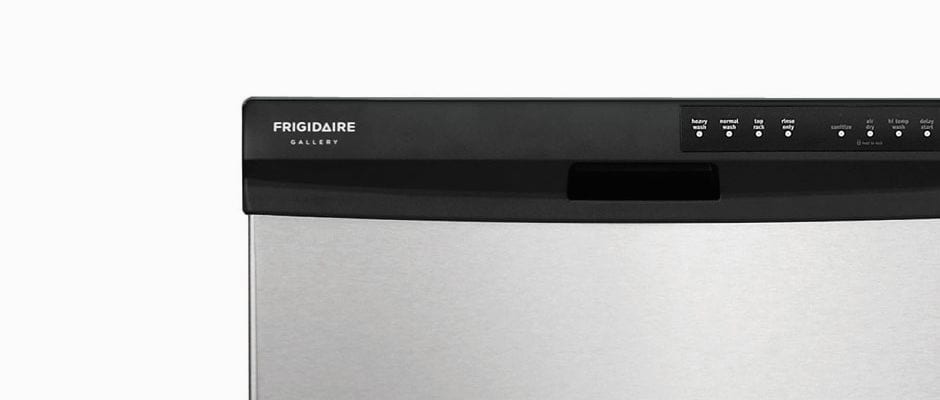Pros
Cons
Introduction
Front
{{section_header}}{{section.name}}{{/section_header}}
The control panel is a straight-up eyesore. The stainless steel finish isn’t so much of a concern, but the bulky, plastic interface is just, well, horrid. The big tasteless logo in the upper left doesn’t help either.
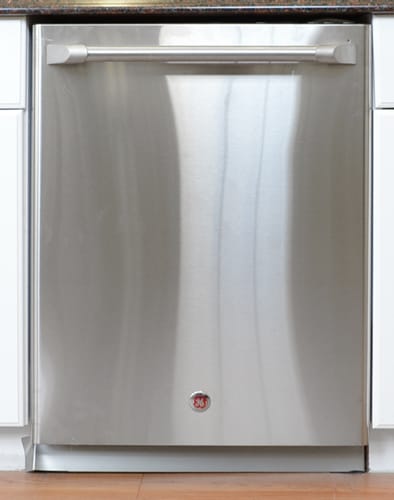
The front of the GE CDWT980VSS.
Finish
{{section_header}}{{section.name}}{{/section_header}}
The finish is a horizontally-grained stainless steel—probably the {{product.model}}’s only saving grace when it comes to design.

Controls
{{section_header}}{{section.name}}{{/section_header}}
Ugh. Just, ugh. We understand that this is an inexpensive machine, but there’s no reason to make the interface this ugly. There are plenty of other plastic interfaces (Bosch Evolution Ascenta, Blomberg DW 14140) that are more tastefully designed. So, why, {{product.brand.name}}? WHY?! It’s not just the look; it feels like the cheapest plastic money can buy, which ultimately interferes with its usability too. Bad job, {{product.brand.name}}. And to think, some of your other machines look so good!
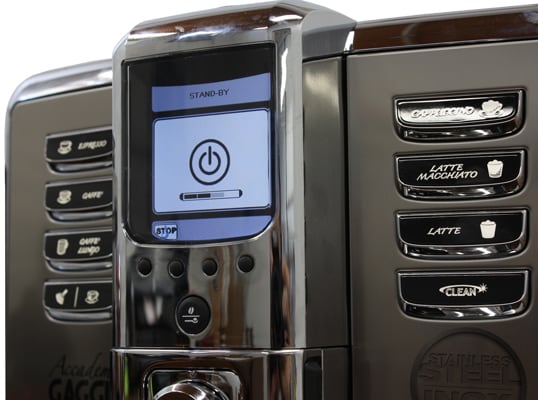
Interior
{{section_header}}{{section.name}}{{/section_header}}
Upon opening the {{product.model}} you are met with a blinding white light akin to the core of the sun—this is the plastic white chemically infused wash tub that smells like used formaldehyde.
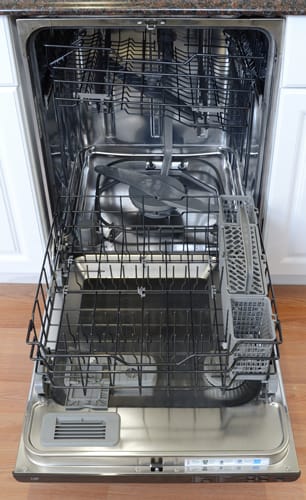
The CDWT980VSS with door open.
Top Rack
{{section_header}}{{section.name}}{{/section_header}}
The racks are quintessentially {{product.brand.name}}. In fact, they’re nearly identical to the FGHD2433KF, and that was a solid machine, so we can’t really complain about them. The main difference is the {{product.model}} dish racks are covered by a rubbery material that helps hold dishware in place. It’s also white—really white.
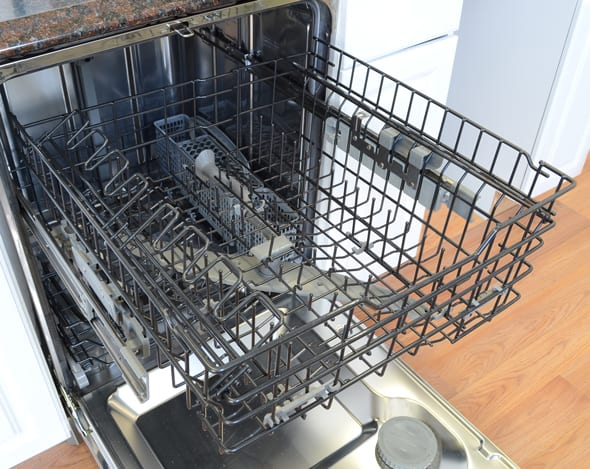
The top rack of the CDWT980VSS.
Bottom Rack
{{section_header}}{{section.name}}{{/section_header}}
The same goes for the bottom rack; there’s not much in terms of adjustability, but it’s rubbery with six rows of tines and isn’t a source of much frustration. Or inspiration.
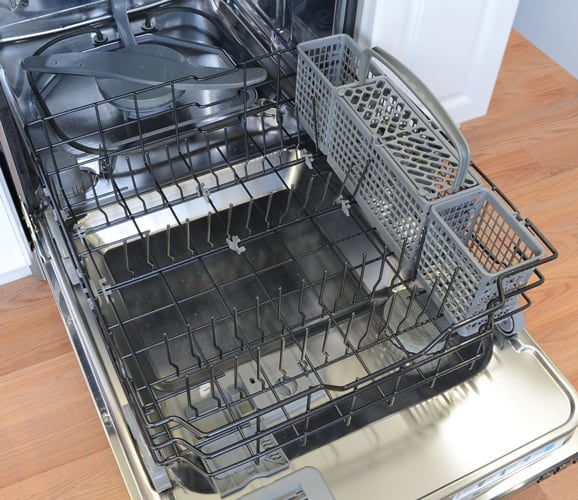
The bottom rack of the CDWT980VSS.
Cutlery Basket
{{section_header}}{{section.name}}{{/section_header}}
A standard {{product.brand.name}} cutlery basket, the {{product.model}}’s is very spacious. The material is also pretty rigid and, surprisingly, not much of an eyesore.
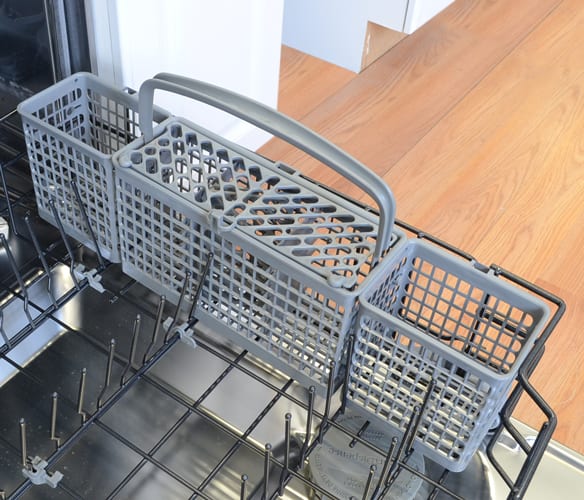
The CDWT980VSS cutlery basket.
Electricity Use
{{section_header}}{{section.name}}{{/section_header}}
The Normal Wash and Top Rack cycles were pretty average in terms of energy consumption (0.64 and 0.62 kWh, respectively); it was the Heavy Wash that was so demanding (a whopping 1.81 kWh). This made for an electricity cost of roughly 6 or 7 cents per wash in the Normal and Top Rack cycles, and an astounding 19 cents per Heavy Wash.

Water Use
{{section_header}}{{section.name}}{{/section_header}}
Just like with the electricity use, most of the water consumption was in the Heavy Wash. While the Top Rack and Normal Wash used 3.66 and 4.26 gallons of hot water, respectively, the Heavy Wash drained 9.39 gallons. This made for a water cost of roughly 4 to 9 cents per wash.
Yearly Running Cost
{{section_header}}{{section.name}}{{/section_header}}
Once again, it was that Heavy Wash that dragged down the {{product.model}}’s overall efficiency score. With both electricity and water included, the Heavy Wash will cost you about 32 cents per cycle. Based on an average of using the Normal Wash 50 percent of the time, though, you can expect this machine to cost roughly $35.57 per year to operate.
Washing Speed
{{section_header}}{{section.name}}{{/section_header}}
As with both efficiency and wash performance, most of our frustration stemmed from the Heavy Wash. While the Top Rack and Normal Wash took 73 and 106 minutes to complete, respectively, the Heavy Wash clocked in at more than three hours (197 minutes). It should be mentioned, though, that the default Heavy Wash setting engages both the Sanitize a High Temperature Wash features.
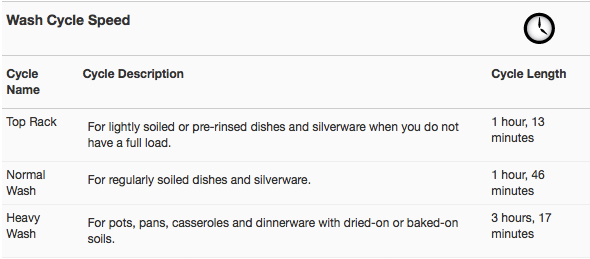
Washing Performance
{{section_header}}{{section.name}}{{/section_header}}
Meh. The Normal Wash performed pretty well—not great, just decent—and the Heavy Wash was also pretty meh. The lack of a Quick cycle also hurt its overall wash score.
Quick Wash Cycle
{{section_header}}{{section.name}}{{/section_header}}
Why {{product.brand.name}} thought to include both a Top Rack and Rinse Only cycle, but leave out a quick cycle is beyond us.
Normal Wash Cycle
{{section_header}}{{section.name}}{{/section_header}}
The Normal Wash did surprisingly well on our protein tests, namely the baked egg and dried milk stains. It wasn’t as impressive on the spinach test, though. In fact, in both the Normal and Heavy Washes, tiny green flecks could be found scattered throughout the bottom rack.
Normal Cycle
Heavy/Pots & Pans Wash Cycle
{{section_header}}{{section.name}}{{/section_header}}
For a cycle that took more than three hours to complete and engaged both the Sanitize and Hi-Temp Wash options, you’d expect the clean to be near-perfect. But we’re talking about an extremely imperfect (and hideous) dishwasher here. Nothing was thoroughly cleaned, and it seemed like every plate, bowl, and glass had at least some remnant of a stain. Our baked lasagna test was probably the one exception where the machine exceeded our expectations.
Pots & Pans Cycle
Washing Cycles
{{section_header}}{{section.name}}{{/section_header}}
There are three wash cycles, plus a Rinse Only option, which is used to rinse your dishes with the intention of washing them at a later time. The lack of a quick wash was frustrating, but we imagine the Top Rack cycle could serve as a stand-in for lighter wash loads.
Customization
{{section_header}}{{section.name}}{{/section_header}}
The usual suspects: Sanitize, Air Dry, Hi Temp Wash, and Delay Start (2, 4, and 6 hours). While we don’t imagine consumers will desire much beyond these basic functions, it doesn’t help improve the machine’s overall score.
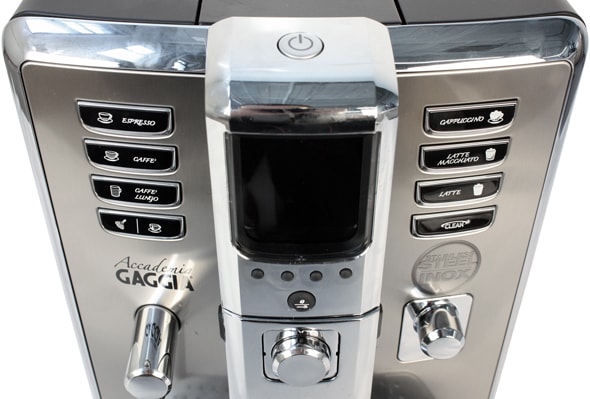
Additional Wash Options
{{section_header}}{{section.name}}{{/section_header}}
In this case, the additional wash options are the same as customization features. The one extra perk is the status display, which indicates the stage in the wash cycle (Washing, Drying, Clean, Sanitized).

Capacity
{{section_header}}{{section.name}}{{/section_header}}
The {{product.model}} was surprisingly high-capacity—at least, more than we expected for such a cheap machine. We were able to fit 10 place settings, including a serving setting. This is average, compared with most other dishwashers on the market.
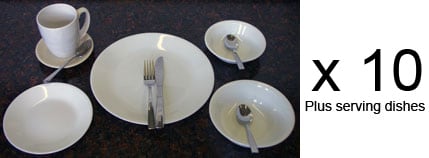
Top Rack
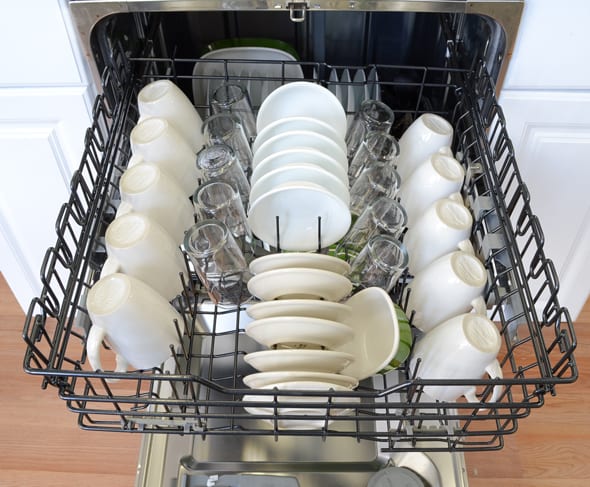
Bottom Rack
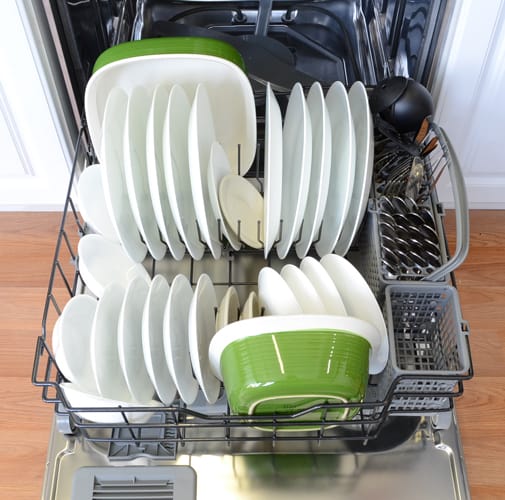
Wash Arms & Filters
{{section_header}}{{section.name}}{{/section_header}}
We imagine that the {{product.model}}’s three wash arms helped deliver its wash performance, as most dishwashers of this type have only two spray arms. A third definitely helps give the machine some extra muscle.
The filtration system included one measly removable part, and even that was difficult to remove. We imagine this would prove problematic over time.
It's also worth noting that the tub itself had a nauseating "chemical" smell to it. It was only apparent when the door was open, but it was not at all pleasant and could easily stink up a small kitchen.
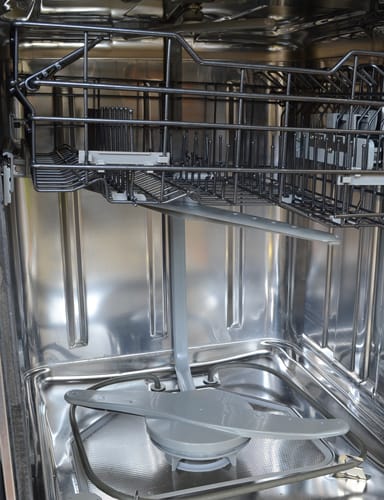
The CDWT980VSS wash arms.
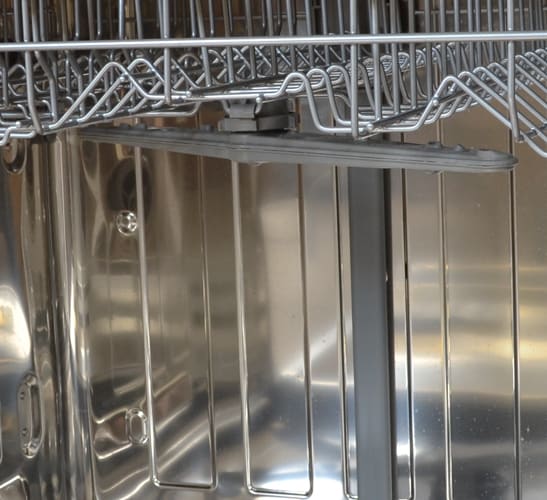
The DW 14140 upper wash arm
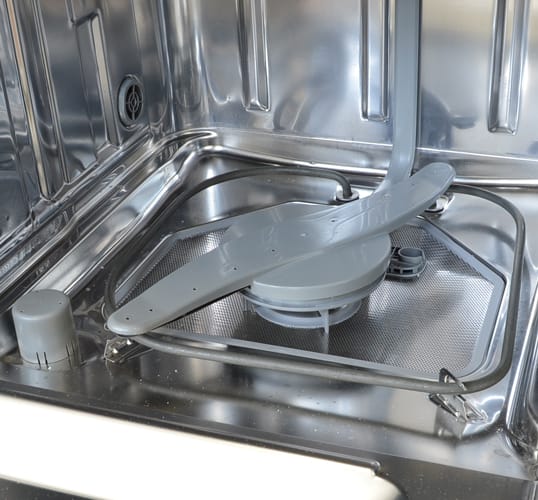
The CDWT980VSS filter.
Lower Dish Rack
{{section_header}}{{section.name}}{{/section_header}}
The bottom rack can’t be adjusted, which limits its overall flexibility, but it’s spacious enough that this won’t be much of a problem. The tines are also covered in a rubber-like material that helps hold dishware in place.

The bottom rack of the CDWT980VSS.
Upper Dish Rack
{{section_header}}{{section.name}}{{/section_header}}
Like the bottom rack, the top isn’t adjustable, save for two collapsible cutlery holders on either side of the rack. Once again, though, we didn’t have much trouble fitting dishware. After all, the {{product.model}}’s capacity score was on par with the rest of the market.

The top rack of the CDWT980VSS.
Cutlery Holder
{{section_header}}{{section.name}}{{/section_header}}
{{product.brand.name}} seemed to be opposed to all forms of adjustability with this machine, as the cutlery basket is also lacking foldable lids. However, it’s very spacious and capable of fitting all sorts of oddly shaped utensils.

The CDWT980VSS cutlery basket.
Detergent Dispenser
{{section_header}}{{section.name}}{{/section_header}}
A market standard, there’s nothing unique about this detergent dispenser. It gets the job done without the bells and whistles.
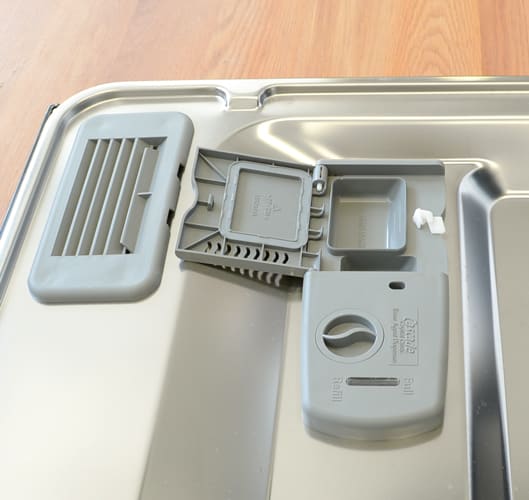
The CDWT980VSS detergent dispenser.
Ease of Use
{{section_header}}{{section.name}}{{/section_header}}
There’s nothing counter-intuitive or difficult about actually loading dishes into this machine; all our complaints had to do with the control panel, which was just, well, absurdly ugly and poorly designed.
Noise
{{section_header}}{{section.name}}{{/section_header}}
Because a sticker on the packaging material boasted of the {{product.model}}’s quietness, we have to point out: This machine is NOT quiet. In fact, it was probably one of the louder dishwashers we’ve tested. Some consumers may not have any qualms about noise, but it’s worth considering. It wasn't a profoundly unpleasant sound—there were no clunky bolts or gyrating gears—it was more the sloshing around of water in the tub.
Controls
{{section_header}}{{section.name}}{{/section_header}}
You can’t tell from the photos, but the buttons are even worse than they look. That’s because they are heavy and difficult to engage. It’s the type of cheap plastic interface that seems to loosen the entire console every time you push a button. Yeah, there are lights to indicate which button you’ve pressed, but it’s also a reflective black plastic that's extremely friendly to fingerprints. There’s absolutely nothing to like about the {{product.model}}’s controls.


Efficiency
{{section_header}}{{section.name}}{{/section_header}}
It’s not abysmal, but it’s nowhere near impressive. Based on our water and power tests, we estimate the {{product.model}} will cost about $35.57 per year to operate. However, it’s worth noting that most of this inefficiency stems from the Heavy Wash, which consumed a whopping 1.81 kWh and 9.39 gallons of hot water per cycle.
Washing Performance
{{section_header}}{{section.name}}{{/section_header}}
Also underwhelming, the {{product.model}} lacks a quick cycle, and offers a so-so clean on both the Normal and Heavy Washes. While the Normal was clearly superior to the Heavy, both were inconsistent and tended to scatter food particles throughout the wash load. Also, the Heavy Wash took a whopping thee plus hours to complete, and it wasn't close to being efficient.
Features
{{section_header}}{{section.name}}{{/section_header}}
There aren’t many impressive or unique wash options or features, mainly because it’s such a cheap machine. I mean, it’d be a lot to expect a pre-installed copy of Space Invaders, but the inclusion of a Sanitize option, Hi-Temp Wash, and Delay Start is just average. Yawn.
Meet the tester
Tyler Wells Lynch is a freelance writer and journalist whose work has appeared in Vice, Wirecutter, Gizmodo, The Rumpus, Yes!, and the Huffington Post, among others. He lives in Maine.
Checking our work.
Our team is here to help you buy the best stuff and love what you own. Our writers, editors, and experts obsess over the products we cover to make sure you're confident and satisfied. Have a different opinion about something we recommend? Email us and we'll compare notes.
Shoot us an email